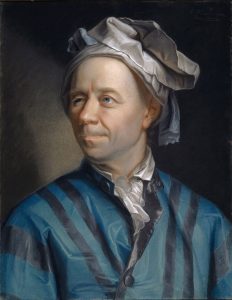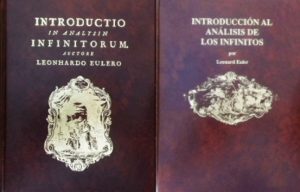I am talking, of course, about the volcano that has been overwhelming the inhabitants of the island of La Palma in recent weeks, plunging many of them into ruin and desolation. And yet the spectacular eruption is not without a rare beauty. To the point that day trips are being organised so that tourists in other Canary Islands can enjoy such a spectacle. There is nothing strange about this and, in fact, this was anticipated shortly after the eruption began by the Minister of Industry, Trade and Tourism in some inopportune (and because of that unfortunate) statements. It was said at the time that how could one describe as a “marvellous spectacle” an event that was destroying the livelihoods of so many palmeros. The fact is that there is an adjective specially designed for this type of situation: “sublime”. The sublime is an aesthetic category analysed by the philosopher Immanuel Kant (1724-1804) in his Critique of Judgement (1790). “The sublime is that,” wrote Kant, ” compared with which everything else is small; it is that which, just because it can be thought of, demonstrates a faculty of spirit which surpasses every measure of the senses. The feeling of the sublime is a feeling of pain and, at the same time, an awakened pleasure, a commotion, an alternating, rapid movement of attraction and repulsion of the same object”. Thus, the volcano of La Palma is undoubtedly sublime: we are attracted by its splendid beauty and at the same time terrified by its capacity to destroy.


The interesting point is that, as I see it, Kant distilled this aesthetic category of the sublime from the way mathematicians of the late seventeenth and first half of the eighteenth century had been working with infinity. In particular, from the marvels that Leonhard Euler achieved with infinitely large and small quantities, for example, in his masterpiece Introductio in Analysin Infinitorum. “We can hardly find another work in the history of mathematics which produces on the reader so strong an impression of the genius of its author as the Introductio does,” wrote E. W. Hobson. And, possibly, anyone who has read Euler’s book (there is a Spanish facsimile edition: see [2] in the references) will fully agree with what Hobson says. Now, this impression of Euler’s genius is produced because the Introductio has an enormous capacity to move; it is, without doubt, a text that leaves an impression, because the genius that Euler shows in that book is translated into a text full of beauty, and therefore leaves an indelible mark on those who read it.
Euler’s handling of the infinities in the Introductio is purely intuitive. And therein lies the genius referred to in Hobson’s quotation. Infinities are dangerous entities with strange properties; their handling, if not done with due prudence, can have disastrous consequences. For the Greeks, the infinite was a kind of fearsome beast, a gigantic minotaur that had to be fled from. Euler, however, did not flee; on the contrary, he approached the monster, stroked its back and attached a yoke to it that enabled him to make fertile a previously barren field. It is admirable the docility that the infinite shows in Euler’s handling of it. A docility that, given the idiosyncrasy of the concept, comes to shock, to chill. And in that shock, in that shudder, lies precisely the aesthetic achievement. Voltaire was of this opinion: “For taste it is not enough to see or know the beauty of a work: it is necessary to feel it, to be affected by it”. The German philosopher Theodore Adorno also asserted that the aesthetic achievement of an object lies precisely in its capacity to shock, to produce some kind of shudder. And this idea appears in the famous lectures for ordinary people given by Serge Lang at the Palais de la Découverte in Paris in the early 1980s under the title The Beauty of Doing Mathematics, where Lang referred to “that shiver down the spine” that the most beautiful mathematical reasoning produces.
A brief description of the personality of these infinities, as depicted in Euler’s book, might be as follows. An infinitesimal quantity is an infinitely small quantity, but without being zero. Being different from zero allowed it to appear as a denominator in quotients, and being infinitely small it could be taken as zero when it was of interest to simplify the expressions. On the other hand, an infinitely large quantity remains invariant when a normal number is added to it, which means that if \(N\) is one of these infinitely large numbers, then we find the disturbing equality \(N+1=N\). Similarly, an infinitely small number \(\omega\) is a number that is not 0, but no matter how many times we repeat it, it will be unable to beat 1, 1/2, or any other positive number we can imagine. To reach 1 with an infinitely small number \(\omega\) it is necessary to put into operation an infinitely large number N so that then \(N\times \omega=1\).

Kant was of the generation following that of Euler, and was born and lived practically all his life in Königsberg, then the capital of East Prussia but now called Kaliningrad and belonging to Russia. Königsberg is one of the Eulerian cities, along with Basel where he was born, and St. Petersburg and Berlin where he was a mathematician at the corresponding academies of science. Euler did not live in Königsberg, but he did solve the famous problem of his seven bridges. In the 18th century, there were seven bridges in the city connecting the banks of the river Pregel with two islands, and people wondered whether or not it was possible to cross them all without crossing the same bridge twice. Euler, with a reasoning as simple as it was imaginative, which later gave rise to graph theory, showed that such a route was impossible.
As I said before, bearing in mind Kant’s description of the sublime, it is no exaggeration to say that the inspiration for defining this aesthetic concept could well have been found by Kant in Euler’s reasoning with infinitesimal quantities -it could be Euler’s or that of any other mathematician of the 18th century; the fact is that Euler was by far the one who best explained the power of the infinite.
Indeed, that “in comparison with which every other thing is small”, or that “surpasses every measure of the senses”, which Kant uses in his definition of the sublime, is nothing but a rhetorical transcription of the disturbing formula \(N+1=N\), which describes the property of an infinitely large quantity, and which Euler used again and again in the Introductio. And that “feeling of pain” is nothing other than that which it produces in our mathematical hearts to see written that \(N+1=N\), or to see in the denominator of a division a quantity which two lines later disappears as zero. But, on the other hand, Kantian “awakened pleasure” describes perfectly what one feels before the wonders that Euler managed to obtain with those tormenting properties of the infinities. All of which means that, reading Euler’s handling of the Introductio, one cannot help but feel “a commotion, an alternating, rapid movement of attraction and repulsion” towards those magical objects that are the protagonists of his book: the infinities.
So it is no exaggeration to call the Introductio a sublime text: possibly the best work in history for discovering what creative genius in mathematics means, and one of the most appropriate for feeling the commotion generated by its singular beauty.
References
[1] Antonio J. Durán, La poesía de los números, RBA, Barcelona, 2010.
[2] Leonhard Euler, facsimile and critical edition with translation into Spanish by J.L. Arantegui and notes by Antonio J. Durán., Real Sociedad Matemática Española y SAEM Thales, Sevilla, 2000.


Leave a Reply